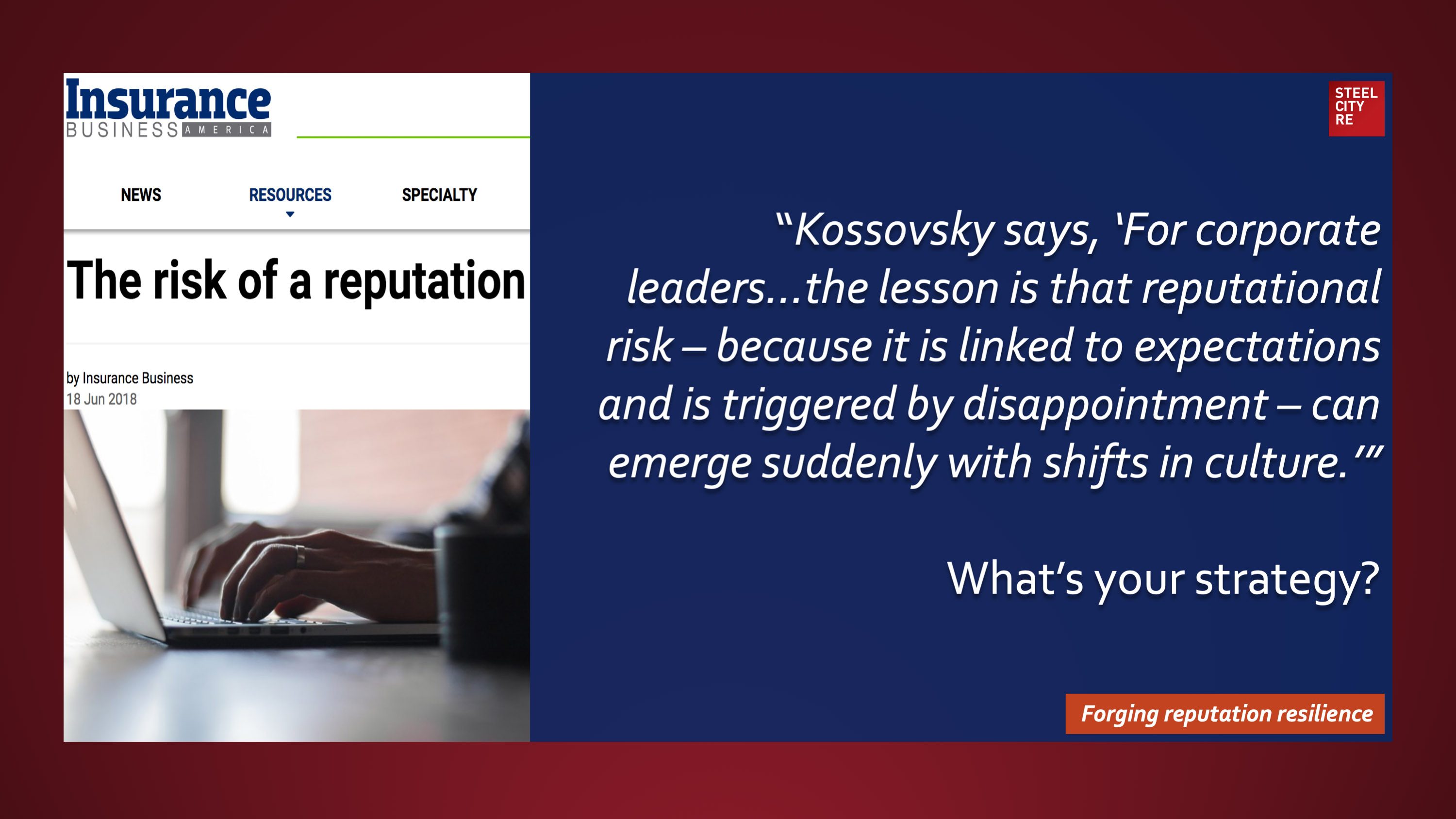Social media in particular has the power to greatly accelerate change, and it’s being used as a “powerful weapon against companies, industries and individuals when they become targets,” Kossovsky says.
The growth in the overall frequency and severity of reputational losses has been driven by three factors, according to Steel City Re CEO Dr. Nir Kossovsky. The increasingly high expectations of stakeholders (resulting in a progressively low tolerance of failure), the rise in the use and ability of social media to spread both true and false stories, and a growing sense of anger and disappointment among the general populace are all creating a breeding ground for reputational disasters.
The prospect of a reputational crisis today means more than just bad PR, though – it is likely to impact a company’s bottom line. In the five years leading up to 2016, reputational insurer Steel City Re found a 461% increase in corporate reputation-related losses.
June 19, 2018
Insurance Business
“According to Kossovsky, economic damage from a reputational crisis ‘can be as great as the damage from a sudden tornado.’”
Reputation crisis: disappointment, diminished trust, causing economic losses.
Reputations are valuable strategic intangible assets. Threats to these assets⏤ enterprise reputation risks, often mislabeled “brand risks” ⏤ need to be managed, and management needs to be overseen through reputation risk governance lest reputational damage or reputational harm result in long-tailed go-forward losses in economic value and/or political power. Because these intangible risks arise from the interplay of stakeholder expectation, experiences, and media amplification, parametric insurances for intangible asset risks, for reputational value, for reputational harm, and for reputation assurance help mitigate risk by telling a simple, convincing and completely credible story of quality reputation governance to stakeholders. This story telling effect is the expressive power of insurance complementing insurance’s better known instrumental power of indemnification.
Risk management, risk financing in insurance captives, and risk transfer through reputation insurances comprise the constituent elements of a comprehensive solution. What’s your strategy?

